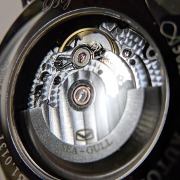|
Are there any other sandwich-style cases besides the Sliger SM560 and FormD T1 that will fit an Asus TUF 3090 or EVGA FTW3 3090? I've currently got an NCASE M1 v5 but I don't think either card will fit in there. It might fit in the v6 but if I'm going to have to swap cases I want to go to a sandwich-style case.
|
|
|
|

|
| # ? May 10, 2024 13:08 |
|
Meshlicious is sandwich style and I can confirm will fit a 3090 FTW3 if u a bad enough dude (I was not)
|
|
|
|
NoDamage posted:Are there any other sandwich-style cases besides the Sliger SM560 and FormD T1 that will fit an Asus TUF 3090 or EVGA FTW3 3090? Both fit in the m1, but you need 180 degree pcie adapters and might lose the front i/o (not sure on v5). How about the Meshlicious? Its a vertical sandwich.
|
|
|
|
I fit an MSI 3080 Gaming X Trio in the Meshliciois. You should be fine.
|
|
|
|
Canna Happy posted:Both fit in the m1, but you need 180 degree pcie adapters and might lose the front i/o (not sure on v5). How about the Meshlicious? Its a vertical sandwich. Thanks all for the suggestions on the Meshlicious, but after trying to cram this giant GPU into the M1 I think I'm just going to size up to the NR200 to have more room to work with and not have to mess with riser cables. (The original goal was to switch to a smaller sandwich-style case so it would take up the least room possible on my desk, but gently caress it, I'll just mount the NR200 under my desk and free up the desk top entirely.)
|
|
|
|
NoDamage posted:Welp I tried to put the TUF in the M1 v5 and it almost fit but I couldn't get it seated into the PCIe slot. This was with the front i/o panel completely removed but I gave up before even trying to find out whether I'd be able to put it back on. Perhaps someone better at Tetris than I could have wedged it in there but I didn't want to risk damaging the card. If you know 100% you have enough room by measurement and are just being blocked by the frame/other components, you can technically disassemble the M1's frame. There are no rivets, so you can just take out the phillips screws, entomb the GPU inside, then build the case back up around it. According to the compatibility list, you'll also need low-profile power connectors. Also, thinking back to my experience with my FE and the EKWB water block, I know I had issues with the ASUS z590i and clearance between the GPU backplate and the IO/VRM assembly.
|
|
|
|
It's technically not SFF but it's certainly m-ITX , and people told me to  so here is the saga of the Xproto-L. Apologies in advance for my disaster-area desk. so here is the saga of the Xproto-L. Apologies in advance for my disaster-area desk. For those who aren't aware, Xproto is a vertical butterfly-style open case made by Xtia, a Chinese outfit. It hit mainstream about a year ago, and uses a SFF PSU, m-ITX mobo, and can accommodate founders' edition and smaller 30X0 cards. Since then, they've updated the line with water cooling and AIO mount parts, as well as the case I bought, the Xproto-L. I was running a not-particularly-hardcore build circa late 2019 (2600X and a GTX 1650 Super on a X570 motherboard in a ATX case with a 750 watt PSU), but wanted to move to some smaller form factor and put the case on top of my new sit/stand desk. I also didn't want to throw out a bunch of perfectly good two year old parts in the process, so the Xproto-L was interesting to me. The L is bigger and allows a standard ATX PSU as well as the beefiest 30x0 cards. The only thing I needed to replace was the motherboard. I bought a B450 motherboard for $95 bucks as a Microcenter open box and was off to to the races. I ordered the case, a custom flat right angle DisplayPort cable extension, and some custom cables for my Seasonic Focus GX-750. The total was $220 shipped, which included $40 bucks for FedEx international air, the only option available. Kind of ridiculous. Once out of the overpack, the case is really nicely packaged:  In this Styrofoam square are all the case parts, a screwdriver and an small allen key, some custom cabling, a PCI-e 3.0 riser, and all the hardware in a nicely organized box. The packaging was very impressive.  Mostly out of the packaging (one case side didn't fit in the photo). That's an inch mat if you're looking for scale. The long dimension is about 16", the short dimension is about 7", and the depth is about 7" total (each side, plus a center section)  The finish is very nice, it's much darker and bluer than I expected. It's really quite a striking color. The quality of all the pieces was very good. No scratches or scrapes and even finish.  I saw that in 2020 users complained about wrinkling on the bends in the case but it's hardly discernible here.  Starting off - these standoffs hold the two halves of the butterfly apart and are mostly used for cable management.  PSU and mobo in place on the one side. I had misplaced the PSU (one notch too high) and this ended up being more difficult than it should have been. Due to the height of the wifi antenna connectors on the Gigabyte B450 I Aorus Pro Wifi, it was very hard to get the I/O panel in to place. I ended up having to take off the padding on the rear of the I/O panel to get it to all fit in, but it did eventually. You can see that the main motherboard cable is not very well routed - the instructions suggest to route it down in between the motherboard and PSU, and then back up to the motherboard. This was not possible with the stiff cables they included. I ended up setting it in a giant loop.  Back side of the first half of the butterfly. You can see the riser cable for GPU, the power cable for GPU ready to run to the other half of the butterfly, and the CPU cable plugged in to the mobo and PSU.  The halves of the butterfly are tentatively together. This means the power button is attached as well as the PSU extension cable that puts the wall plug in to the top panel with the GPU and mobo I/O. This is where things started to go a little sideways.  You can probably see the problem - the PSU extension cable will not plug in to the PSU, because the lower part of the butterfly is screening the PSU 's power port. There is not enough clearance between the PSU and the lower part of the case in the foreground to plug in the cable to the PSU. I suspect there are three problems - first, the Focus GX-750 has its power input at the extreme side of the case. Second, the window in the case is really designed for a SFF sized PSU. Third, the ATX PSU must be mounted lower than a SFF PSU in order to clear the motherboard , which reduces clearance at the power input end. I ended up taking the PSU very carefully off its bracket and plugging the extension cable in to the PSU before mounting it on its bracket. In the end, I took it apart and just dropped the extension cord right out of the PSU without attaching it to the frame  Here's the vaguely finished product. You can see the downside of this design - it looks super cool but as soon as you start plugging cables in to it, you kill the aesthetic. As a result, I'm investing in some additional right angle cables to help cable management by dropping all the cables through the center "chimney" between the sides of the butterfly.  A bit more finished - I've hidden more wires and put the side bracket that covers the "chimney" in places, plus I replaced the shark fin antenna with two little stubby antennae. The only issue right now is the USB cable that goes to all my peripherals through a hub, but I have some custom flat cabling on the way to take care of that. Oh yeah, they included a little "not a mousepad" for it to sit on, nice touch. Pros:
Cons:
I seem to have provided more cons than pros in the end but I don't think the cons are all that significant, or they are mitigatable, provided you are tolerant of open PC life. (We'll see on that for me!) For the case to make sense, you really have to be after the build experience. I've built relatively normal PCs before, but never SFF or something of this nature. I also have some experience with mech keyboards and a lot of car repair so I would say that I am above average in mechanical inclination and skills. I personally found it to be really fun and just the right amount of difficult and stressful! tl;dr High quality case with a good and challenging building experience and an original design. The building process is most of the fun. If people want more pictures I am glad to provide. I'll probably fuss with cabling to get as clean a look as possible and then look at replacement cooling options (likely a low profile Shadow Rock or a low profile Noctua) so I'll probably post more pictures anyway.
|
|
|
|
I was looking at the XProto cases in fact, so thank you so much for your report! (Currently undecided between an open case and a DIY wall mount following this guide) You mentioned that the L supports AIO cooling, I currently have a pretty small system (Arctic Cooling 120), do you think it would fit well or just about as well as ATX PSUs i.e not very?
|
|
|
|
And what stubby antennae did you find? Iíve got that same motherboard, and I havenít had any luck finding a low-profile alternative.
|
|
|
|
KYOON GRIFFEY JR posted:
Is the case actually slightly bending with the weight of CPU Heatsink or is it just me? How's the wobble?
|
|
|
|
Thanks for the NR200 suggestion a few weeks back. Had to print a bracket for my psu, but everything fits now. Stock pcie cables are kinda snug and ugly, but I don't think I care enough to splurge on customs. Any ideas for a good cpu cooler that will fit that space for a Ryzen 3600x? 
|
|
|
|
I think the general "best" non aio CPU coolers for the nr200 are either the fuma2 or the u12a(not officially supported as it's too tall but some people have made it work). Either of those may require dropping the top fan or going to a slim top fan instead. Also assumes you aren't using the bracket since that further restricts height. The fuma2 is awesome if you're a quiet freak, but it's not meant for max performance at all costs..
|
|
|
|
VorpalFish posted:I think the general "best" non aio CPU coolers for the nr200 are either the fuma2 or the u12a(not officially supported as it's too tall but some people have made it work). Either of those may require dropping the top fan or going to a slim top fan instead. I run two A12x25 up top with the U12A and it fits. Iíd assume it should work unless their AMD mobo is taller than my Intel z490. https://i.imgur.com/gOgzGWG.jpg
|
|
|
|
For the 3600X the Fuma 2 is more than enough. Mugen 5 would also work, or the Arctic Freezer 34 Duo. I think you only need a slim top fan with the Fuma 2 if you're using the Aorus b550i board (and presumably the 450 and 570 versions) because of the slightly higher CPU placement.
|
|
|
|
Crosby B. Alfred posted:Is the case actually slightly bending with the weight of CPU Heatsink or is it just me? How's the wobble? It's not bending. The CPU heatsink isn't very heavy overall and it's solidly mounted. It probably looks bent because the PSU is not straight due to the PSU bracket bending slightly, or alternately because I took a very non level picture. Overall, it's very stable and sits quietly on its pad - it's not light. I put it directly on the hardwood desk and it also seemed stable that way too. nitsuga posted:And what stubby antennae did you find? Iíve got that same motherboard, and I havenít had any luck finding a low-profile alternative. I got these little antennae which seem to be just as effective as the shark fin and fit over the closely-set antenna connectors. They look decent to me; the SFF hardos make a nicer looking version of same but they are $20 instead of $8. NihilCredo posted:I was looking at the XProto cases in fact, so thank you so much for your report! (Currently undecided between an open case and a DIY wall mount following this guide) I think actually the non-L also supports AIO and custom loop cooling if you order the right brackets. The AIO sits 90 degrees to the "chimney" of the case so I don't think it would be very difficult to attach (famous last words) However, there isn't a 120mm bracket. edit: they publish a guide for the AIO specifically here: https://www.xtia.com.cn/portfolio/items/aio-bracket-installation-guide KYOON GRIFFEY JR fucked around with this message at 19:42 on Jul 14, 2021 |
|
|
|
Enos Cabell posted:Any ideas for a good cpu cooler that will fit that space for a Ryzen 3600x?
|
|
|
|
edit: wow, wrong thread. oops!
|
|
|
|
KYOON GRIFFEY JR posted:I got these little antennae which seem to be just as effective as the shark fin and fit over the closely-set antenna connectors. They look decent to me; the SFF hardos make a nicer looking version of same but they are $20 instead of $8. Danke! Those look fine, and I'll gladly (try to) save a couple bucks.
|
|
|
|
The new nr200 colors are pretty cool.
|
|
|
|
Ah poo poo I kinda really like the purple and orange ones, but I already have the case 
|
|
|
|
Oh gently caress, I want an Orange NR200 so bad lol.
|
|
|
|
teagone posted:Oh gently caress, I want an Orange NR200 so bad lol. Saaaaaaaame
|
|
|
|
For me it's the 50's green one.
|
|
|
|
Was it Nintendo that made orange and purple 'in' as tech colours?
|
|
|
|
I think the purple comes from all the retro wave / synthwave / vaporware aesthetic from the last decade Orange I don't know. But I've repeatedly seen orange on gaming accessories and cases. I like machines that are coated in a very intense, deep orange. Weird attraction. The green one would fit better into our living room though.
|
|
|
|
Lord Stimperor posted:For me it's the 50's green one. That would pair very nicely with this Mercury Rocketeer keyboard
|
|
|
|
If I want to benchmark a bunch of CPU coolers against each other I should set a fixed frequency and voltage for consistency right? Otherwise temperature comparisons across coolers won't be meaningful because the CPU might boost to different speeds with different coolers?
|
|
|
|
NoDamage posted:If I want to benchmark a bunch of CPU coolers against each other I should set a fixed frequency and voltage for consistency right? Otherwise temperature comparisons across coolers won't be meaningful because the CPU might boost to different speeds with different coolers? Yup, and be aware that its real hard to actually get a lot of modern CPUs to actually listen to you. Even if you manually set clocks and voltages, disable turboing and P-states, and do everything else you can... sometimes they still dont want to listen and will be enforcing their own voltage tables and such. Its the reason GamersNexus went out and built a fancy CPU simulating heater for their cooler testing. For doing your own home gamer tests, the manual setting stuff is probably fine. But if you are really trying to get scientific with it for like a big corporate purchase (or measure tiny details between like fan brands or something), all of that stuff matters. Youll also probably want one of the graphite thermal pads to test with to rule out paste issues, and a torque driver to make sure the mount is the same each time. Also you have to share your data cause i will want to nerd out over it!!
|
|
|
|
Cygni posted:Its the reason GamersNexus went out and built a fancy CPU simulating heater for their cooler testing. This was the first thing I thought when I read that post. Something I've wondered since GN started getting precise about it: is there a standardized way to report the efficiency of a cooling solution? To my untrained brain there are two factors to consider when trying to rate it--the amount of energy in watts, and the target temperature in C. So an ideal rating would provide something like 125W/60C, stating that this thing will keep a 125W load at or around 60C. From there you could scale based on whatever function governs the relationship. So if the relationship was linear (lol) and you had a 170W load, you could expect roughly 81C on the same cooler. I'm sure there's a million things wrong with the linearity assumption and the engineers in this thread just melted like the guy in Indiana Jones, but either way... a standardized W/C measure would be a reasonable way to compare two different heatsinks right? Edited a link to the GN dissertation on the topic of testing because it's generally worth the watch https://www.youtube.com/watch?v=fmTOJP4KOyk Warmachine fucked around with this message at 15:38 on Jul 30, 2021 |
|
|
|
Yeah, you can't really do that, even with the (definitely false) linearity assumption, the "final" (stable) temperature strongly depends on ambient. You can put a PC inside a fridge and it'll run way cooler with the same hardware than it will be next to a space heater. Watts are already a unit that includes time (W=J/sec), so you could theoretically say "this cooling solution is capable of dissipating xW of heat" (and if that's lower than the heat your CPU/GPU/etc is putting out, you're OK) but that number will vary with fan/pump speed, and of course coolers are designed so those speeds vary. The problem is really that the heat coming out of your CPU/GPU and the cooling capacity of your cooler are both constantly varying in response to each other, so it's difficult to slap a number on the cooler that corresponds to anything you'd actually observe in the real world.
|
|
|
|
The typical unit is degrees over ambient at a given thermal load, measured after a sufficient period of time such that the capacity of the cooler material itself to absorb heat is exhausted (these conditions should also correspond to a given fan speed). To get like-for-like comparisons you probably also have to control for humidity and any other conditions that would affect heat transfer to the surrounding air. The surrounding air is an integral part of any cooling solution that doesn't have some form of refrigerant, which makes blanket statements about a cooler's performance like that impossible. When it comes to home use your case and it's airflow become part of the cooling system as well, further complicating such statements.
|
|
|
|
Warmachine posted:To my untrained brain there are two factors to consider when trying to rate it--the amount of energy in watts, and the target temperature in C. So an ideal rating would provide something like 125W/60C, stating that this thing will keep a 125W load at or around 60C. From there you could scale based on whatever function governs the relationship. So if the relationship was linear (lol) and you had a 170W load, you could expect roughly 81C on the same cooler. https://noctua.at/en/noctua-standardised-performance-rating Llamadeus fucked around with this message at 17:24 on Jul 30, 2021 |
|
|
|
Cygni posted:Yup, and be aware that its real hard to actually get a lot of modern CPUs to actually listen to you. Even if you manually set clocks and voltages, disable turboing and P-states, and do everything else you can... sometimes they still dont want to listen and will be enforcing their own voltage tables and such. Its the reason GamersNexus went out and built a fancy CPU simulating heater for their cooler testing. quote:For doing your own home gamer tests, the manual setting stuff is probably fine. But if you are really trying to get scientific with it for like a big corporate purchase (or measure tiny details between like fan brands or something), all of that stuff matters. Youll also probably want one of the graphite thermal pads to test with to rule out paste issues, and a torque driver to make sure the mount is the same each time. Warmachine posted:Edited a link to the GN dissertation on the topic of testing because it's generally worth the watch https://www.youtube.com/watch?v=fmTOJP4KOyk - Set a fixed all-core frequency and voltage for the CPU. The CPU is a Ryzen 5950X and I've been on Intel for a decade and am not terribly familiar with all of Ryzen's BIOS settings so let me know if there are any specific options I should be aware of. The GPU is an Asus 3090 TUF OC and will be identical across all runs so I think I can leave everything default there. - Do multiple runs for each cooler, re-mounting each time to detect paste application or mounting pressure differences. (I considered a thermal pad but kind of want to stick to the giant tube of NT-H2 I already have on hand and just do enough runs so I can tell if I hosed up the mounting.) - Log each run in Hwinfo64. Graph the results looking for any inconsistencies in power and voltage and throw out any bad runs. - Test with CPU load only (Cinebench R23 multi-core, 30 minute runs) and CPU+GPU load to see how hot GPU air affects CPU cooling. (Not sure what tool to use for GPU loads that is consistent between runs and can be easily looped? I've previously used Heaven for this but maybe I should change to something newer?) - Test with stock fans to get an "out of the box" comparison, then do a noise-normalized comparison, then swap all fans to Noctuas to eliminate variability between fans (except for size). - Temperature will be set according to the thermostat and humidity is generally consistent in my house but I'm probably not going to worry too much about this. - I do have a torque wrench in my bike tool kit but it doesn't really seem necessary here since most of these coolers mounts are spring loaded and you just tighten the screws until they won't turn anymore? Let me know if you guys think there is anything I should adjust, it will probably take quite a while to get through all these tests so I want to make sure I don't miss something and then have to re-do them all!
|
|
|
|
Warmachine posted:Edited a link to the GN dissertation on the topic of testing because it's generally worth the watch https://www.youtube.com/watch?v=fmTOJP4KOyk It's a shame they never ended up posting reviews for a lot of the coolers shown there. They did end up posting a handful of additional reviews after that video, but not as many as they were saying. They spent a lot of time revamping their testing with what looks like a really great, well-thought-out model, but I guess something else got in the way of posting reviews.
|
|
|
|
Dr. Video Games 0031 posted:It's a shame they never ended up posting reviews for a lot of the coolers shown there. They did end up posting a handful of additional reviews after that video, but not as many as they were saying. They spent a lot of time revamping their testing with what looks like a really great, well-thought-out model, but I guess something else got in the way of posting reviews. Yeah. What I was digging at with my Slap this into a standards package ala 80 PLUS and put it on the box just like power supplies--you've now turned the thing they don't want to do because competition (it's easier to make wild claims if you're not held to a standard) into a marketing gimmick because people are going to be more interested in buying the COOL certified solution than the mystery metal that doesn't have the certification. Since right now the different testing methodologies and the layer of PR bullshit smeared on top makes it really difficult for me to judge one brand or make of cooler against the others. So I just end up going with Noctua by reputation and trusting that when they say the solution can dissipate 125W, that's better than another Noctua that does 90W. It is the single most frustrating part of building computers for me. Nothing else comes close.
|
|
|
|
   5700G / B550i Aorus Pro AX / Noctua L9a / Mini-Box M350 / PicoPSU 150XT The M350 is actually extremely well-finished for a $50 case - I'm very impressed. I've used $50 cases before and they are usually, uh, "rough at best". This is actually really nice. Usual mITX build errata: didn't put everything together first, and then realized the L9a uses a custom backplate  . Power jack didn't fit in the spot due to the plastic meme armor on the motherboard's IO shield and I had to hacksaw off half of the screw hole for that power jack. Power jack hole has a "crosshair" support bracket designed to fit the barrel connector option (150w brick uses 4-pin DIN) and I had to take tin snips and cut that out. . Power jack didn't fit in the spot due to the plastic meme armor on the motherboard's IO shield and I had to hacksaw off half of the screw hole for that power jack. Power jack hole has a "crosshair" support bracket designed to fit the barrel connector option (150w brick uses 4-pin DIN) and I had to take tin snips and cut that out.The L9a is only rated to about 47W, doing heavy x264 transcoding (3440x1440 CRF 29 veryslow) with full fan speed it runs at about 82C (tctl/tdie) at 60W package power, running around 4.1 GHz. A heavier load like Cinebench R23 eventually pushes it up to 95C at which point it drops to maybe 4 GHz. Which is reasonably acceptable given the form factor, the cooler, and the noise. Might be able to squeeze it a bit more with a thicker fan (I miiiight be able to fit a full NF-A9 PWM (92x25mm) in there instead of the stock NF-A9x14, just barely) or by seeing if I could add the side rail with 40mm fans to force some extra airflow (although that will add noise). Efficiency at the wall is not all that great - I don't think those laptop bricks are all that efficient. I'm idling at about 30W at the wall (5W package power) and during x264 encoding (60W package power) it's running about 100W at the wall. Some of that is chipset/etc but I think I'm losing a lot in the power brick. And while idle efficiency is important to me - tbh as long as it's happening outside the case, it's at least not affecting thermals inside the case. Other than that I do love that PicoPSU for this build - between that and the M.2 SSD it makes it super super clean inside. It's literally just the PicoPSU input and CPU power strings, the front header/USB, and the fan cable, those are the only cables inside, everything else is on the board or on the PicoPSU. Paul MaudDib fucked around with this message at 15:25 on Aug 16, 2021 |
|
|
|
The web page for the L9a says it's suitable for 65W TDP processors, is there another metric that gives a lower wattage it can cope with? Anyway doesn't sound like you're getting quite enough cooling, maybe you could try something like this https://www.alpenfoehn.de/en/products/cpu-cooler/black-ridge-en From your photo I can't see if it will fit. With that cooler you often need to use VLP RAM.
|
|
|
|
knox_harrington posted:The web page for the L9a says it's suitable for 65W TDP processors, is there another metric that gives a lower wattage it can cope with? Dollars to donuts Noctua is assuming you have a fresh air intake that isn't the L9a. I couldn't find anything specific about the generalized test environment, but when testing specific CPUs: Noctua posted:We use well-ventilated tower cases for testing in order to ensure that we get the best possible results that can be achieved with each cooler. As our classifications are based on these fully optimised systems and 22įC ambient, it must be noted that results can be worse at higher ambient temperatures or in smaller, less ventilated cases. For example, if we indicate that a low-profile cooler can maintain base clock without turbo headroom on a particular CPU, it may fall slightly below base clock during sustained continuous loads when run in a small, poorly ventilated ITX case. Source: https://noctua.at/en/noctua-standardised-performance-rating
|
|
|
|
I have an l9i in a quite similar case w/ a 65w proc and it works fine. There's the engine 27 by thermaltake which is a bit shorter and also cools 65w, but some people find they can hear an audible whine w/ it (mine is fine, but it's also a ways away). Not a lot of choices are good + rated for 65w + fit in a short case like that.
|
|
|
|

|
| # ? May 10, 2024 13:08 |
|
yeah if I take the lid off it can push 80W at 85C, basically 20W more at the same temps, so it's an airflow problem. out of the box the case has no natural airflow beyond convection - the fan can suck a little bit (although measuring it out, there's about 1cm between the panel and the fan) and it's got enough louvers that air flows out pretty ok but it's not a huge amount of airflow. I realized I can take the meme armor off the m.2 socket on the top of the board, and I can mount an extra fan in front plus either a thiccer fan on the cooler (which should put it right up against the side - if it fits) or a thiccboi on the option mount rail. Really though the extra thermals doesn't seem to translate into a massive difference in clocks/performance, so even if it works I may just limit it to 65W anyway and call it a day. Maybe it'll be more when I try using it for graphics.
|
|
|











































